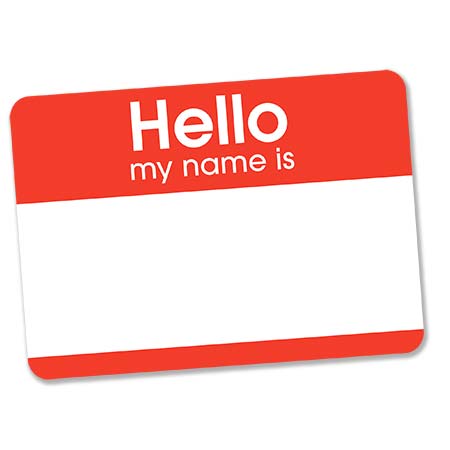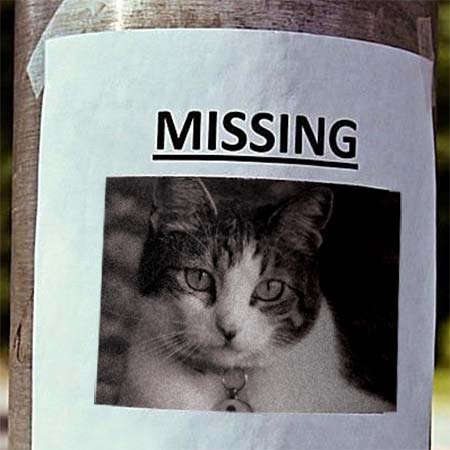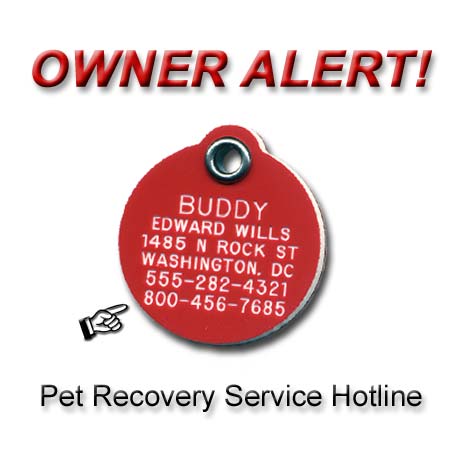The very fact that you are reading this shows that you already know that all pets, even those with microchips, should be wearing identification tags. A recent study found that two-thirds of pet owners don't bother.
But you, you are among the enlightened one-third. You've browsed the myriad of sizes, shapes, colors, and styles and finally picked just the right tag for your fur baby. Now you face the blanks on the order screen; it's time to fill out the engraving information. What will you engrave on your pet's new ID tag?
We have quite literally, made millions of pet tags over the last 30 years and have always suggested the same five line format: Pet Name, Owner Name, Address, City, and Phone Number. It's only a suggestion, we'll print anything that will fit; more lines, fewer lines, funny lines, pretty much anything you can think of. Most people follow our five suggested lines but, that doesn't mean that's the best answer for everyone.
YOUR PET'S NAME

Many people argue passionately against this practice. The primary argument is that bad people are trying, for various reasons, to steal dogs. Knowing your dog's name, they argue, allows a stranger to call your dog by his or her name, gaining trust and making it easier to dognap your pet.
But... if someone is reading the name on your dog's tag, don't they pretty much already have your dog? Or if getting your pet's name is really the key, are you careful not to call your pet by its name at the dog park? And wouldn't a couple strips of bacon work even better? In the more likely event that a good person finds your lost dog, they can talk to him using his name. He may like that.
YOUR NAME
There's not a huge argument here either way. Assume for a moment that you own a big, goofy basset hound. If someone were to call you and say they found a big, goofy basset hound, everyone should be able to connect the dots, even without asking for you by name.
ADDRESS

There isn't any doubt that including your address can be very useful; if someone finds your pet on your block, they may be able to walk him home faster than getting you on the phone. On the other hand, some people may feel uncomfortable having a stranger come to their home.
Your name and address are probably all over the internet and not long ago, published in an old-school catalog called a "phone book." It's hard to imagine how a person getting your address from your pet's tag exposes you or your pet to more risk.
CITY, STATE
There seems to be little downside to including the city and state where you live. Knowing what city you and your pet live in is somewhat helpful but nowhere near as helpful as your actual street address.
PHONE
Yes. Your pet's new tag should definitely include the phone number you're most likely to answer while you are not with your pet. For most people, that means a cell phone number. Consider adding extra phone numbers that will quickly reach you or a relative who can help your pet.
REWARD!

We've added this message to many a tag. We get it, you want your pet back. Most people who find a lost pet are good people, probably pet owners and aren't helping your pet for a reward. If they were to go above and beyond or perhaps incur some expenses helping your pet, then by all means, you should at least offer them a reward. Printing "reward" on your tag may unwittingly indicate that you are willing to negotiate the return of your pet.
NEEDS MEDS
Many pets are required to take daily medication and letting the person finding your pet know that, adds a sense of urgency to the return of your pet. Listing other physical conditions such as blindness or deafness is also valuable information for someone helping your pet.
While I won't go as far as suggesting you do this, consider that by adding this line, even if it wasn't true, might add an unexpected benefit; a pet needing daily medication is less "desirable" to anyone considering stealing or keeping your pet.

We offer our red plastic tag, marked with the universal medical symbol as ID for pets whose medical needs may be critically important.
MICROCHIP INFO
The majority of pets today are microchipped. Some people suggest including the microchip number and more importantly, the microchip company name on your pet's ID tag. Some go as far as to suggest printing only this info on an ID tag.
Here's the thinking behind it. When scanned at a vet clinic or shelter, a chip sends out a long number, between 9 and 15 digits. That's it, just a long, meaningless number. It is now up to the person scanning to figure out which chip company "owns" that number and therefore should have the contact information associated with this chip. Printing the chip company's name on the tag eliminates that step. It can't hurt.
But wait a minute! If someone is reading the chip name and number on your pet's tag, here's a crazy idea, why not just print your information on the ID tag. No scanning and no contacting the chip company required.
OWNER ALERT HOTLINE

One last option is the LuckyPet Owner Alert Pet Recovery Service. In addition to the normal information on your pet's tag, we will add our toll-free hotline number as well. If someone finds your pet and cannot reach you, they can then call our hotline. We maintain a database with alternate phone numbers; your work, your mom, your neighbor, your vet, etc.
We call until we reach you or someone who can help your pet. Some people who are very concerned about putting their information on their pet's tag have chosen to engrave only our hotline number. You can read more about Owner Alert here.

Our five line format has been the industry default for years and for a good reason- it works. If your pet is ever lost, the information you choose to engrave will determine how quickly and easily you can be contacted. Certainly, consider any risks as a possibility. But that risk seems very small weighed against the thousands of times, every single day, that a proper identification tag does its job and reunites a pet with his or her family.


